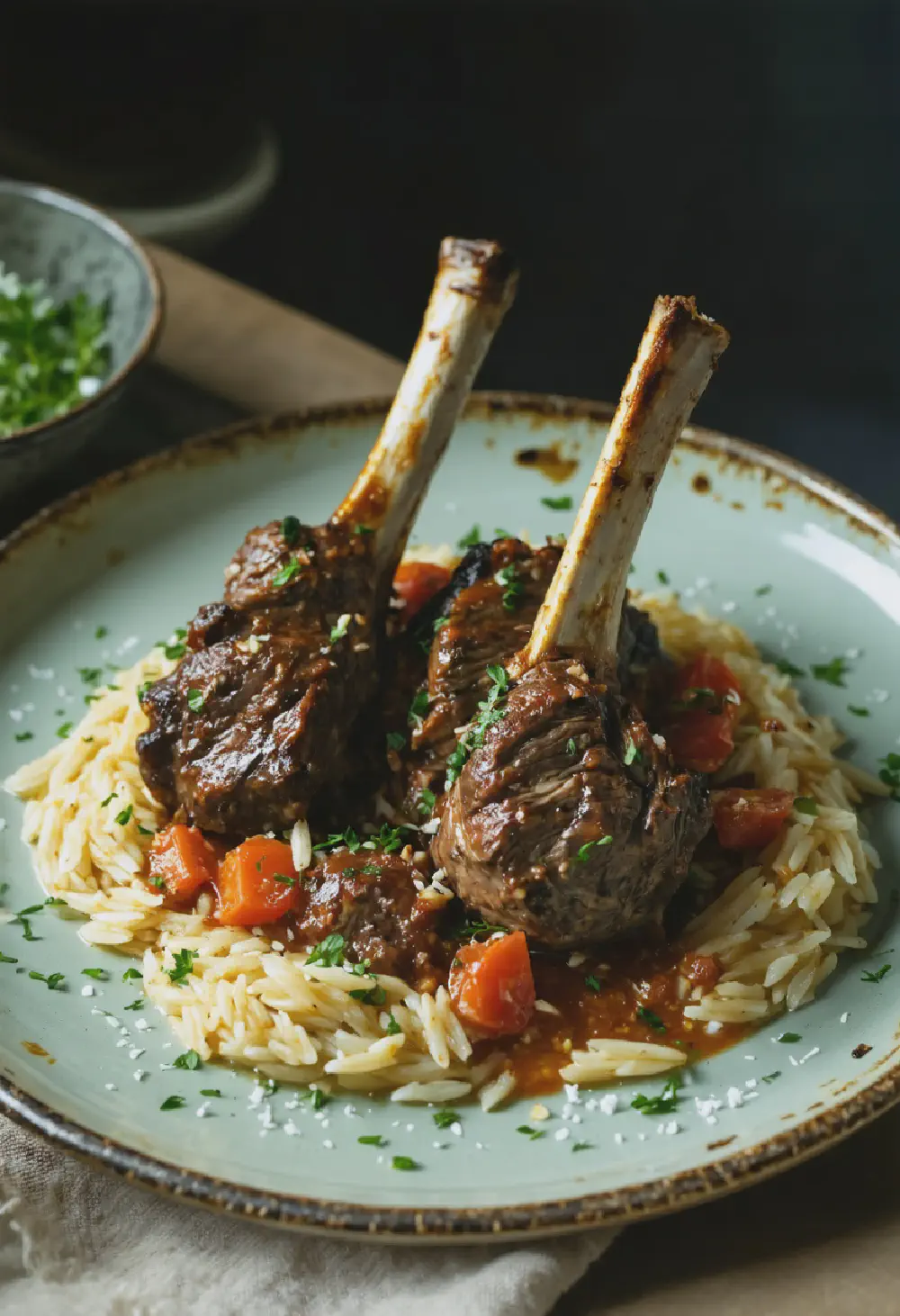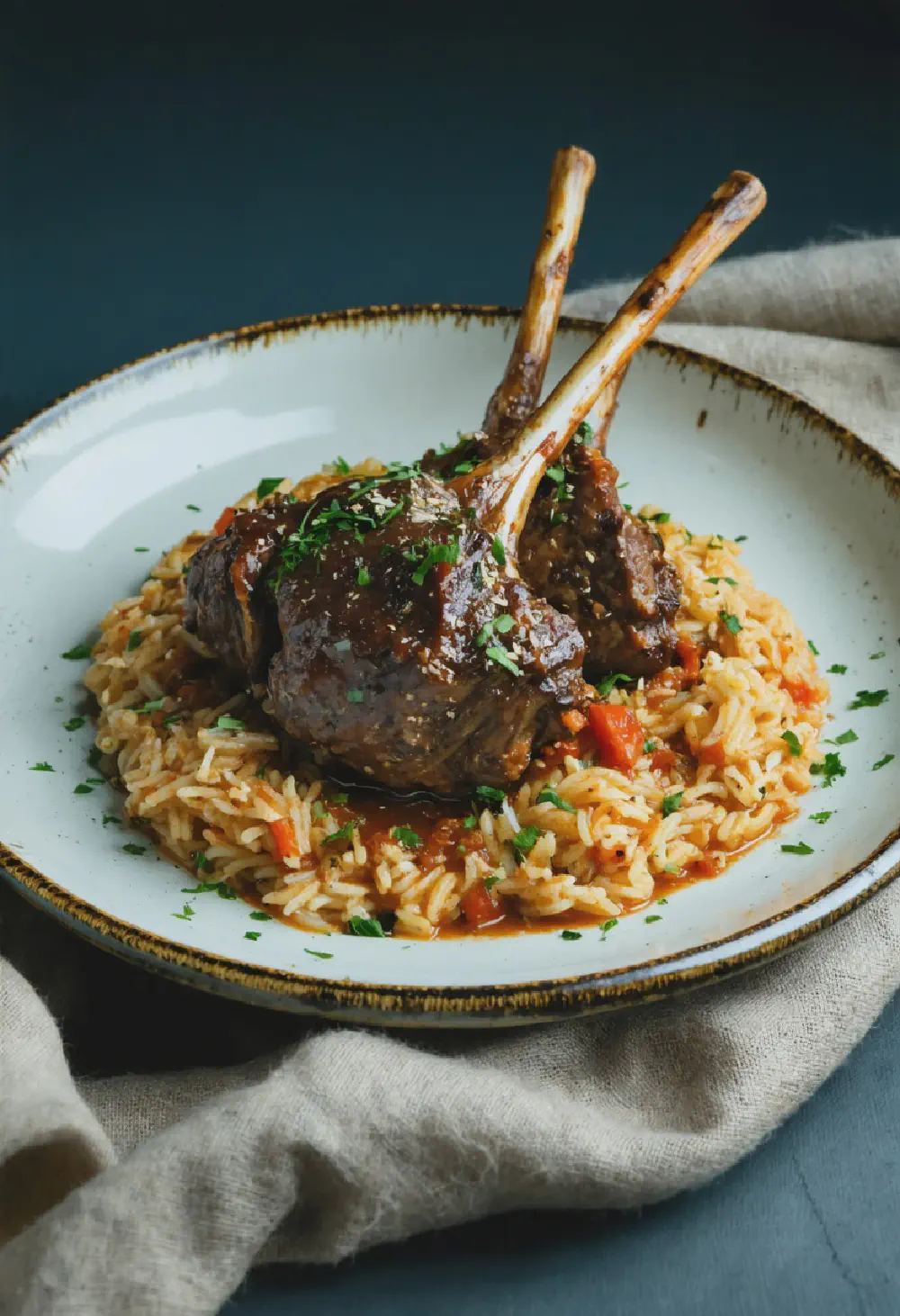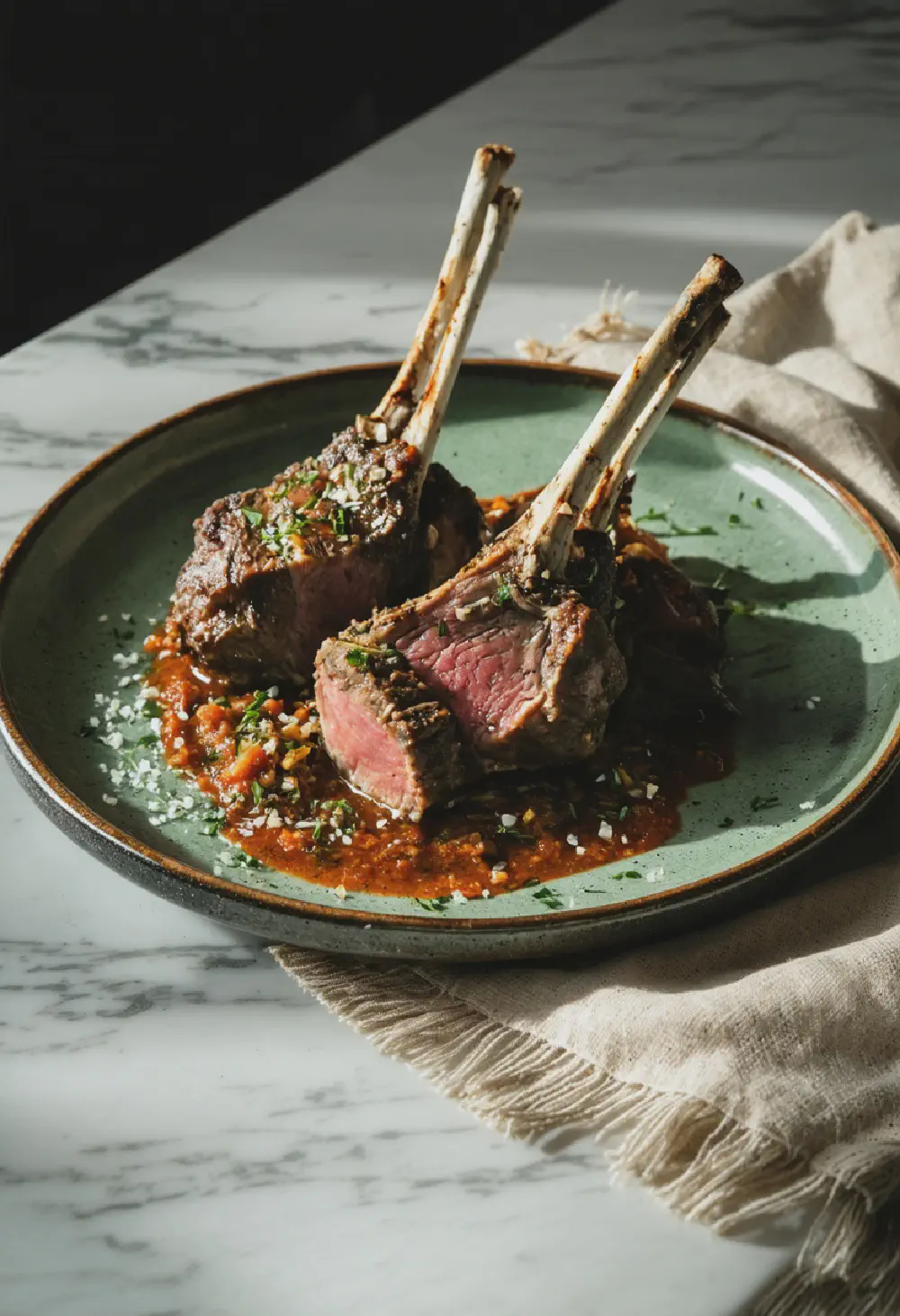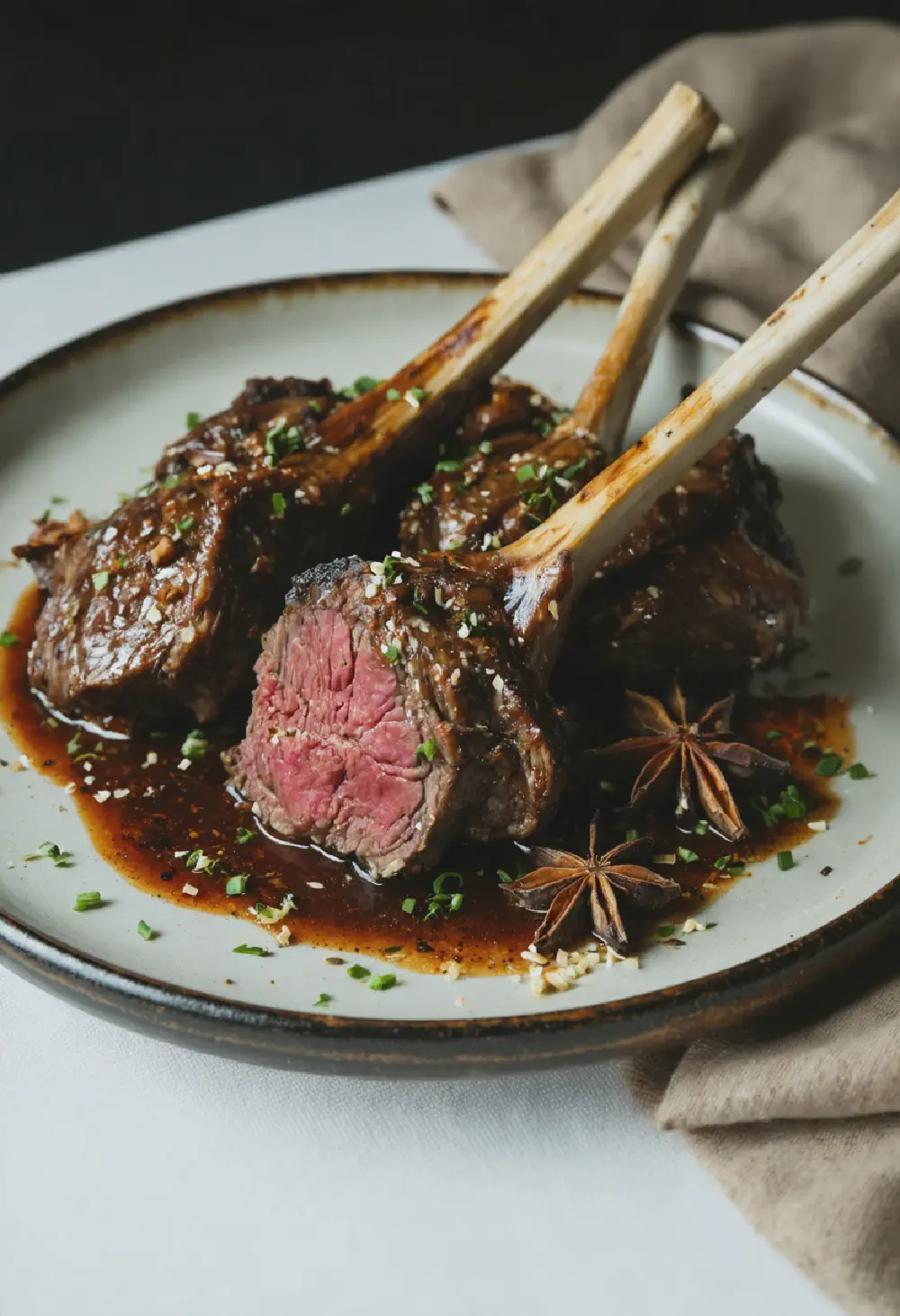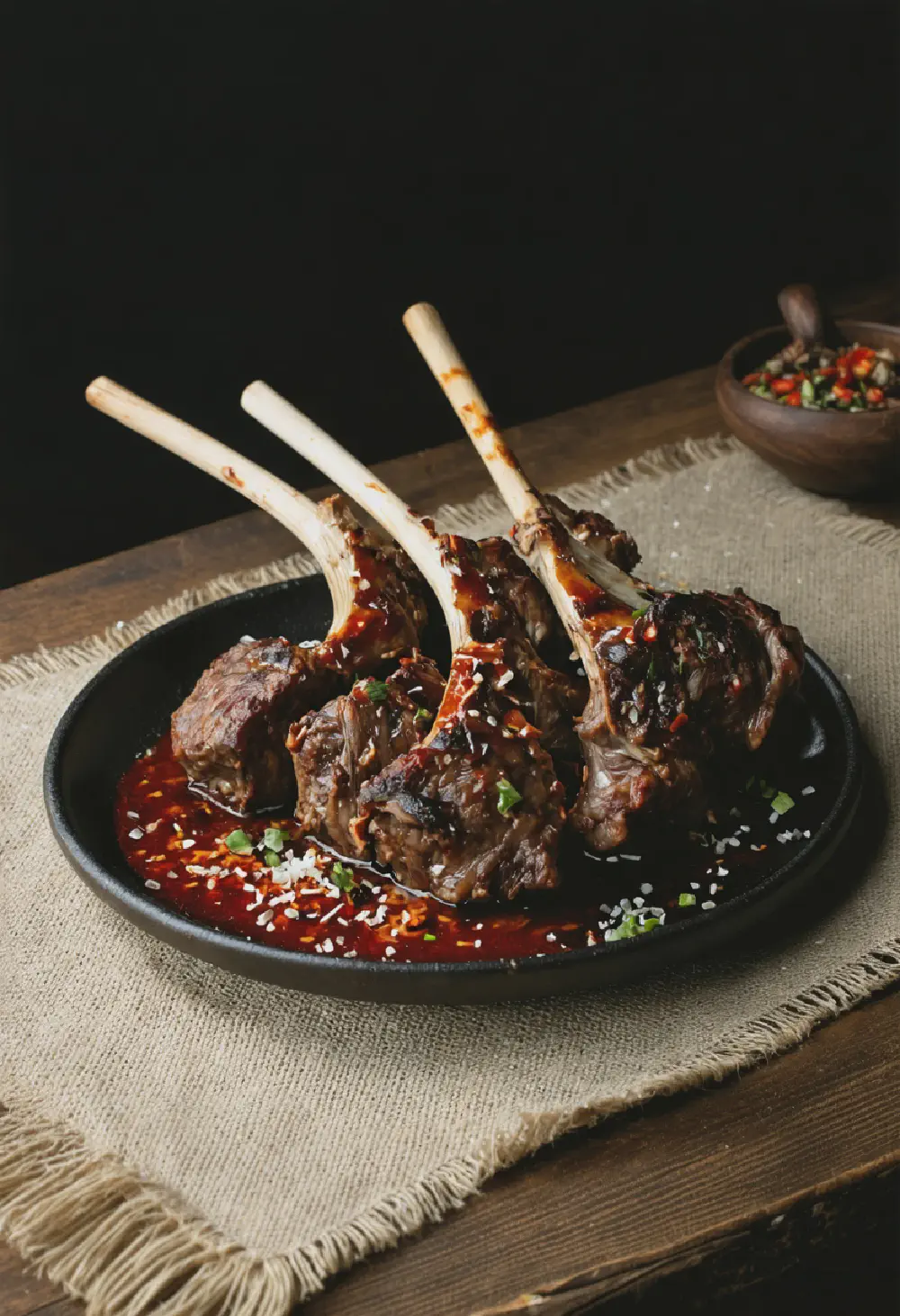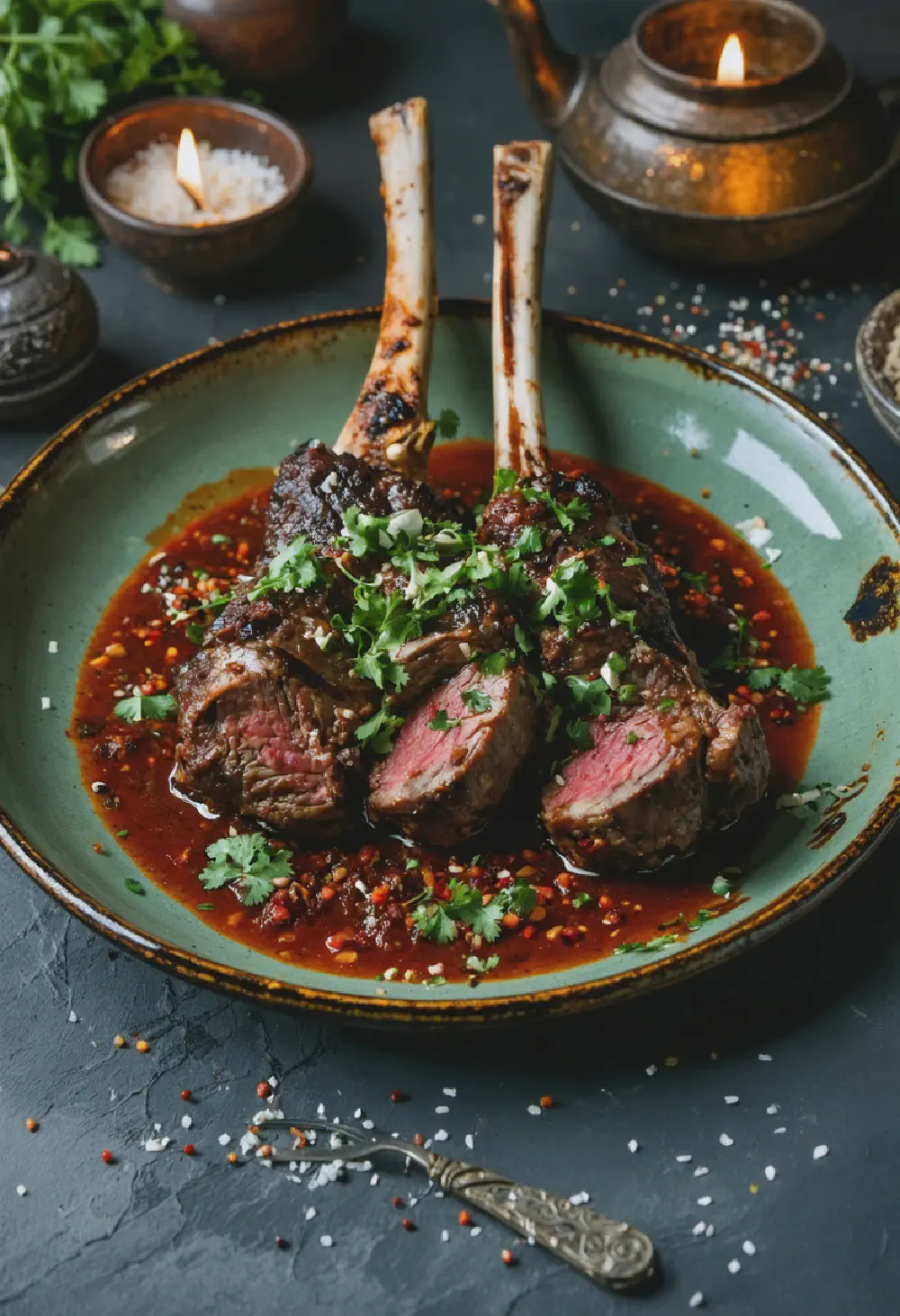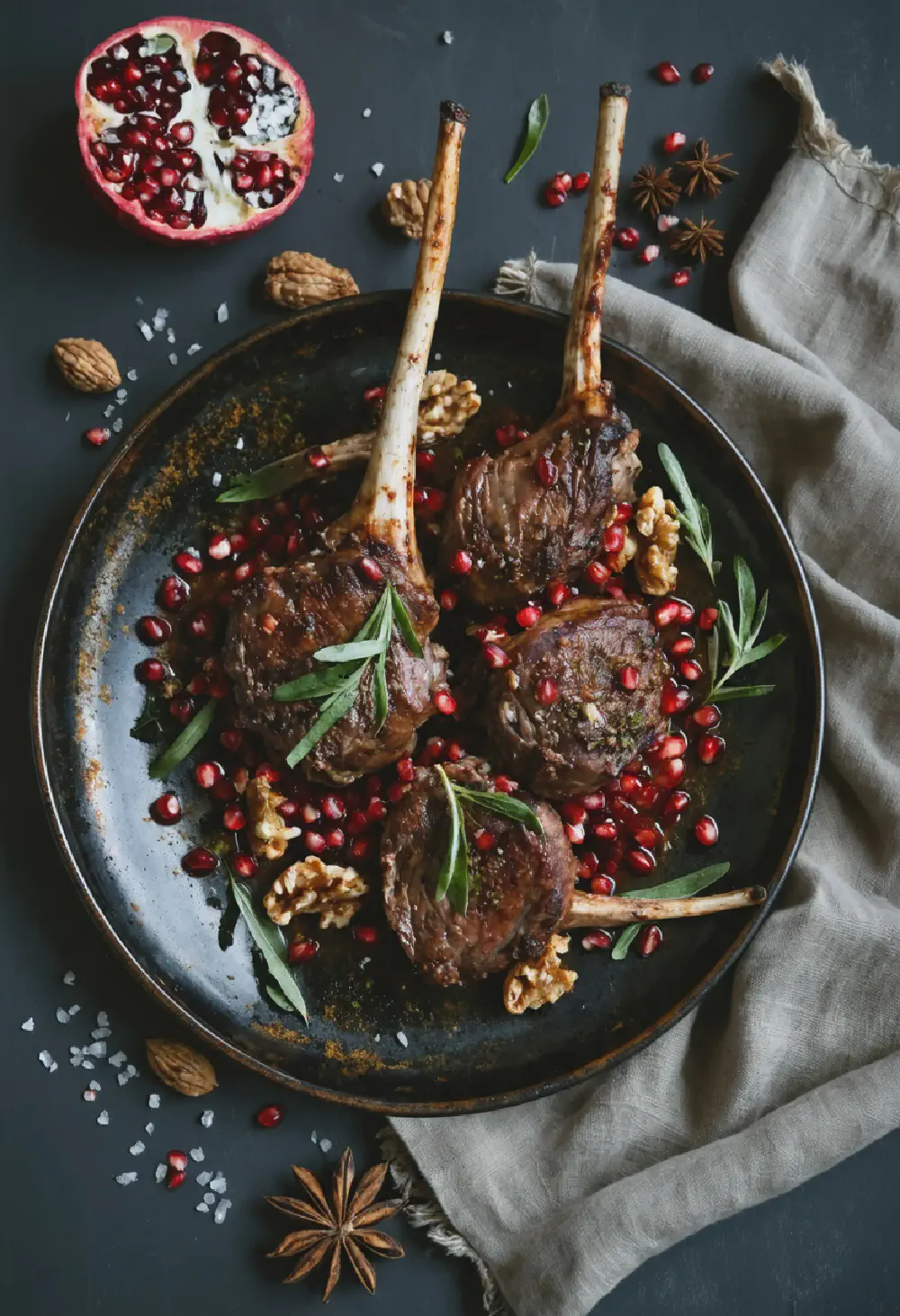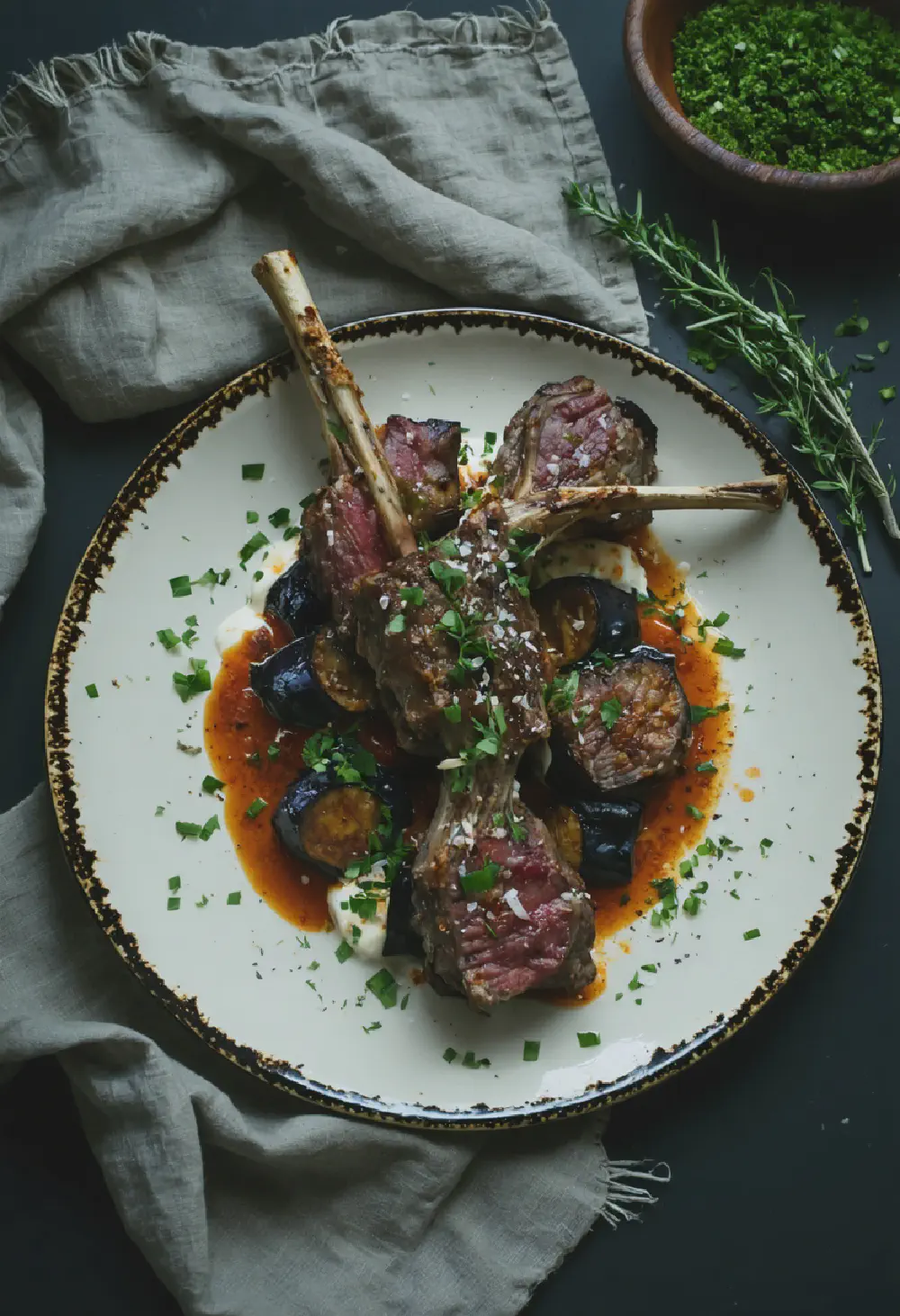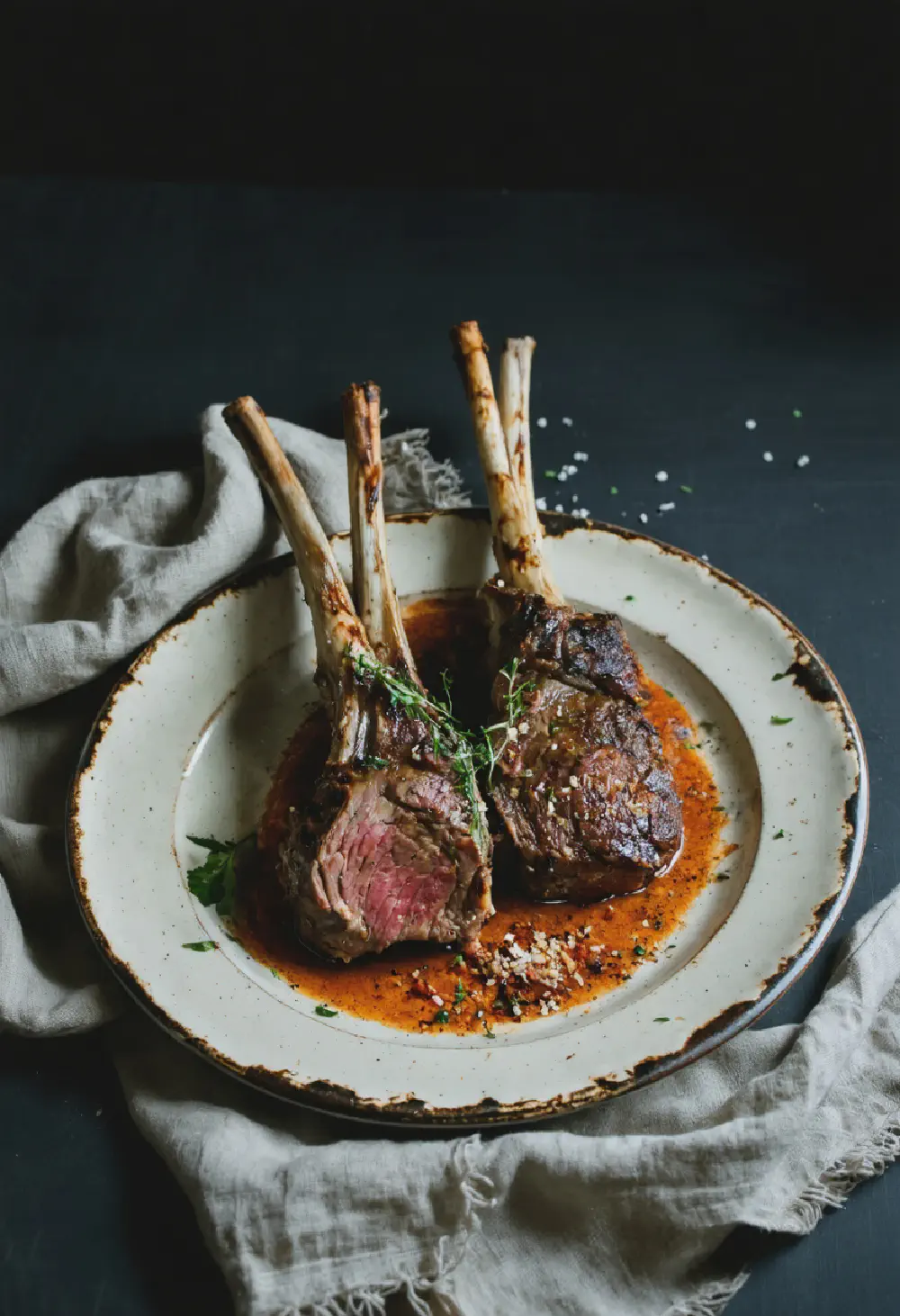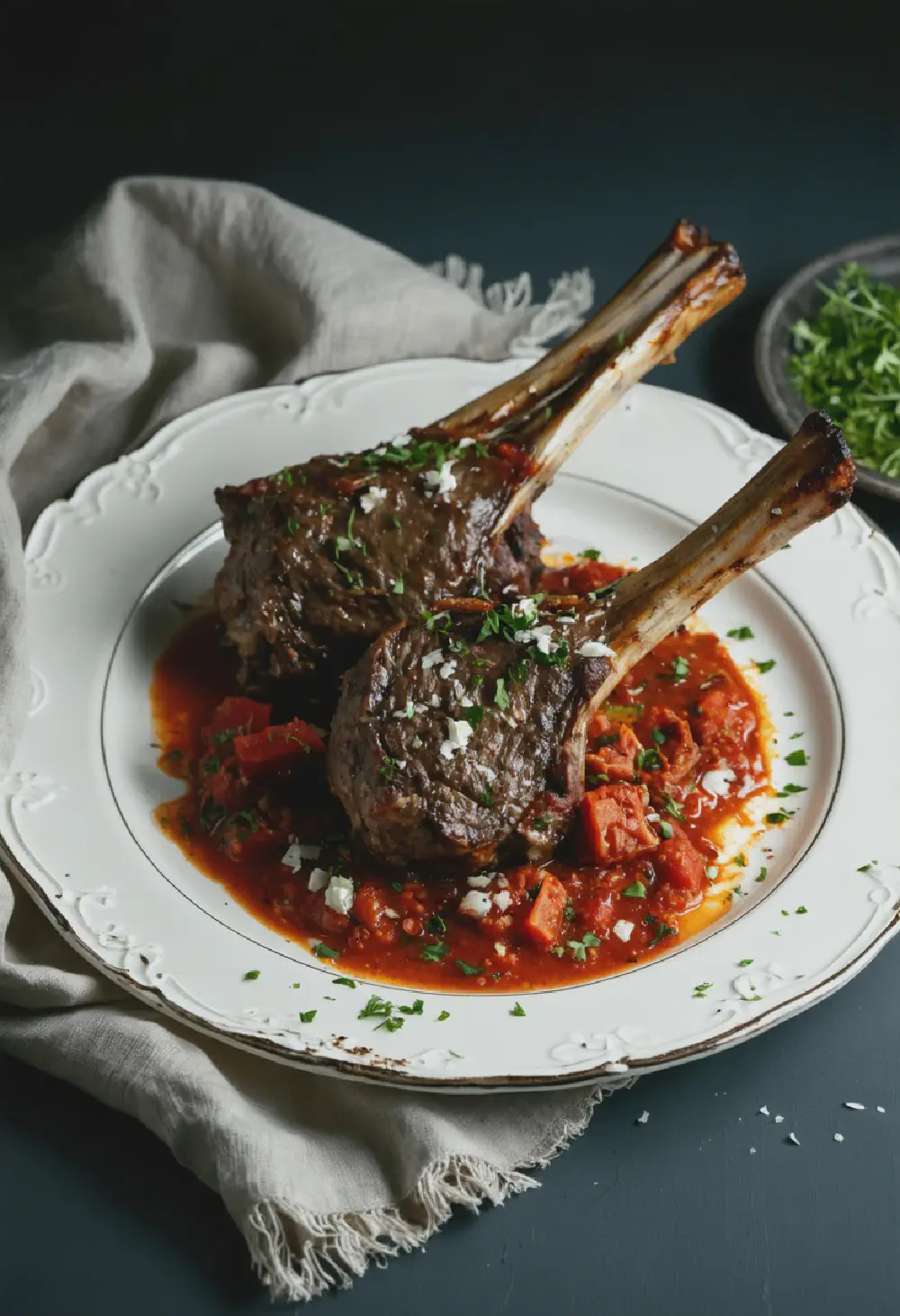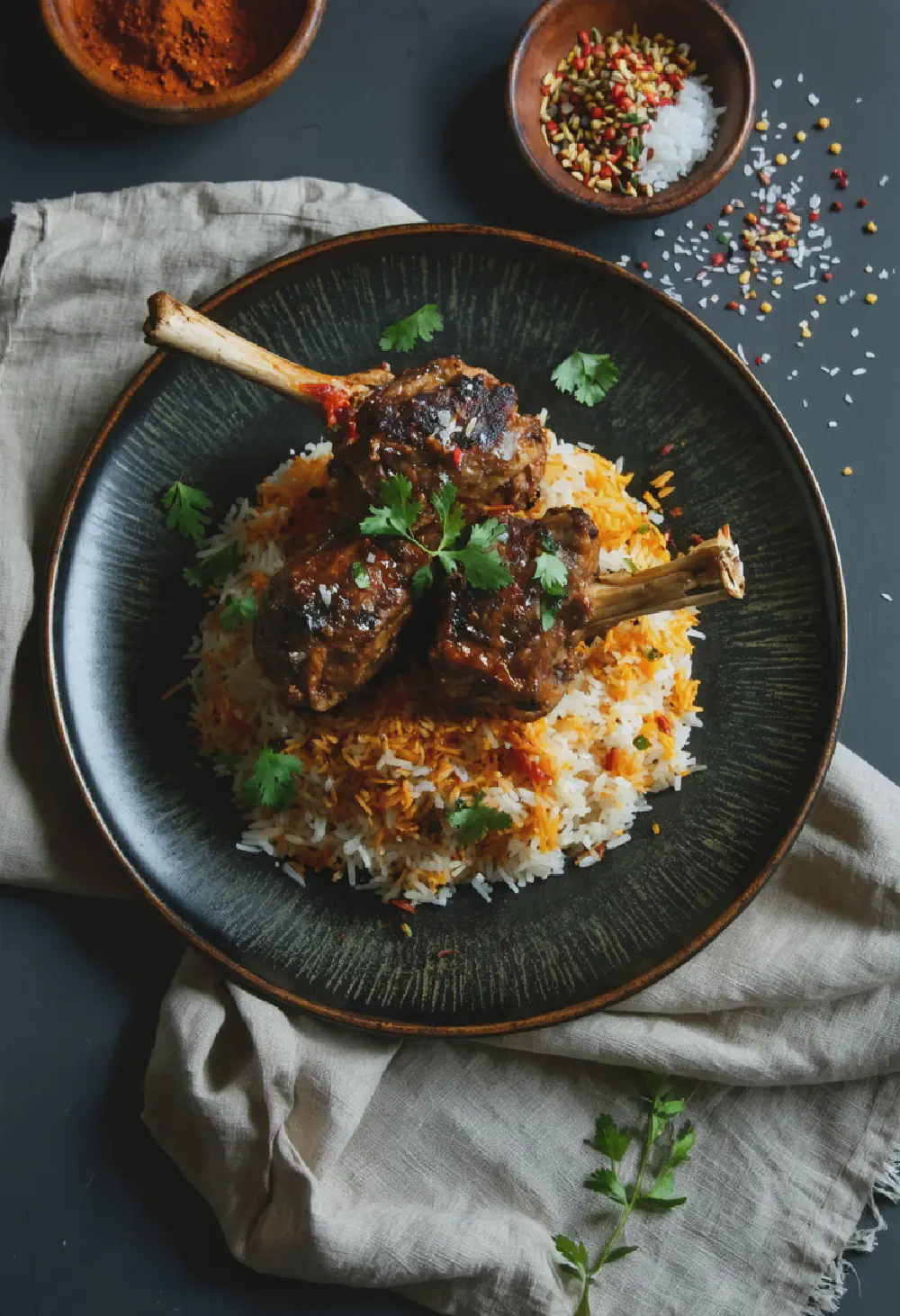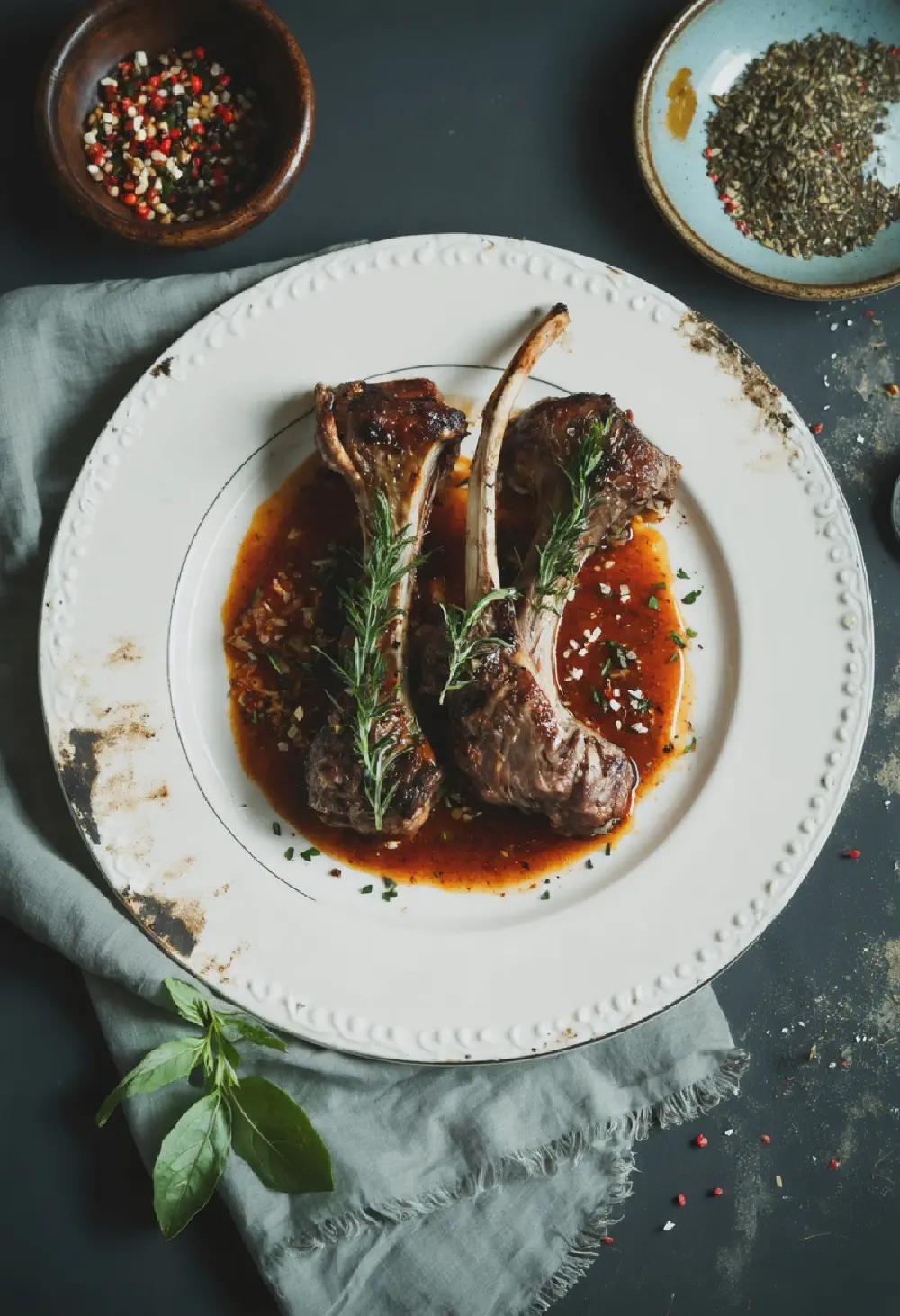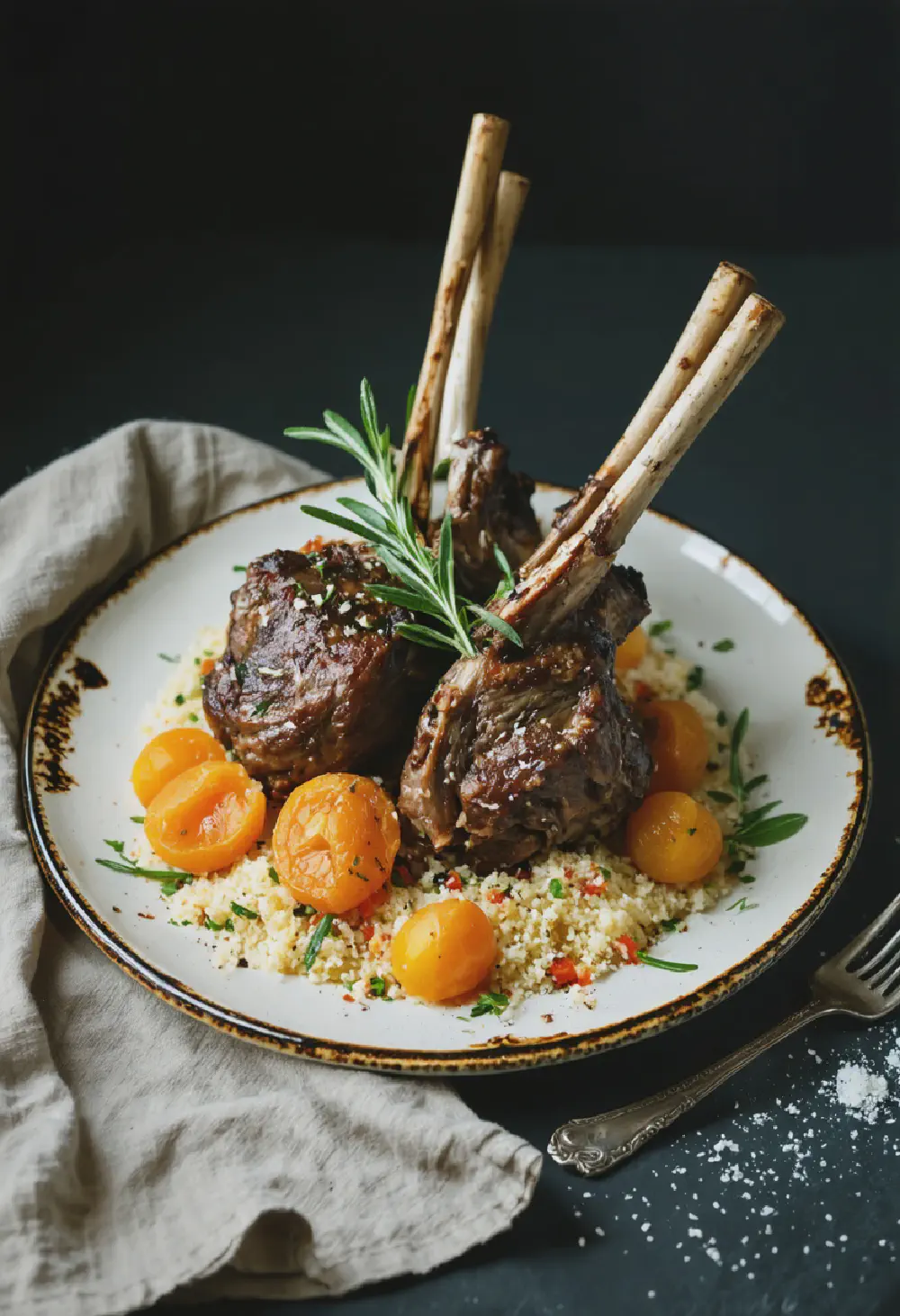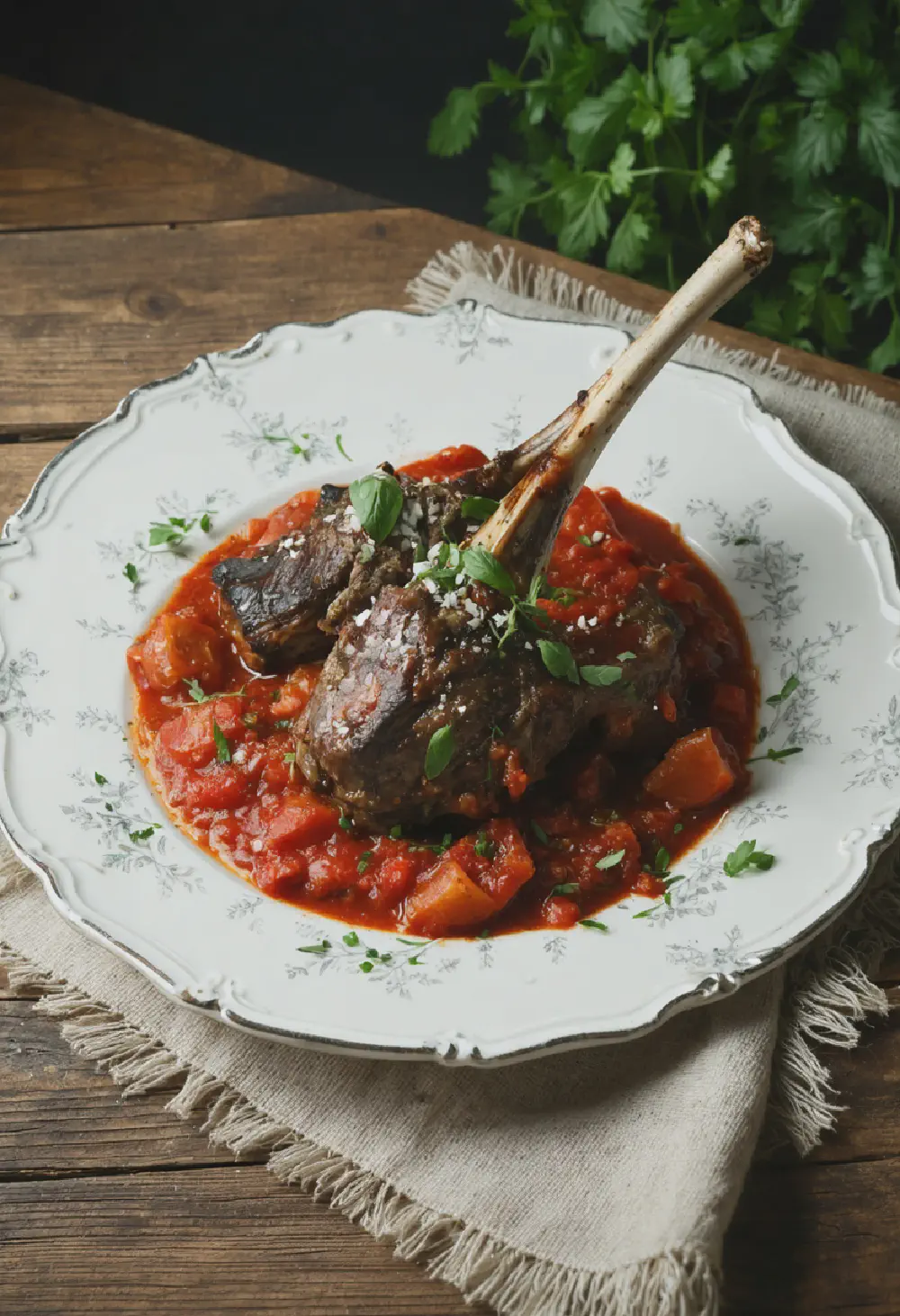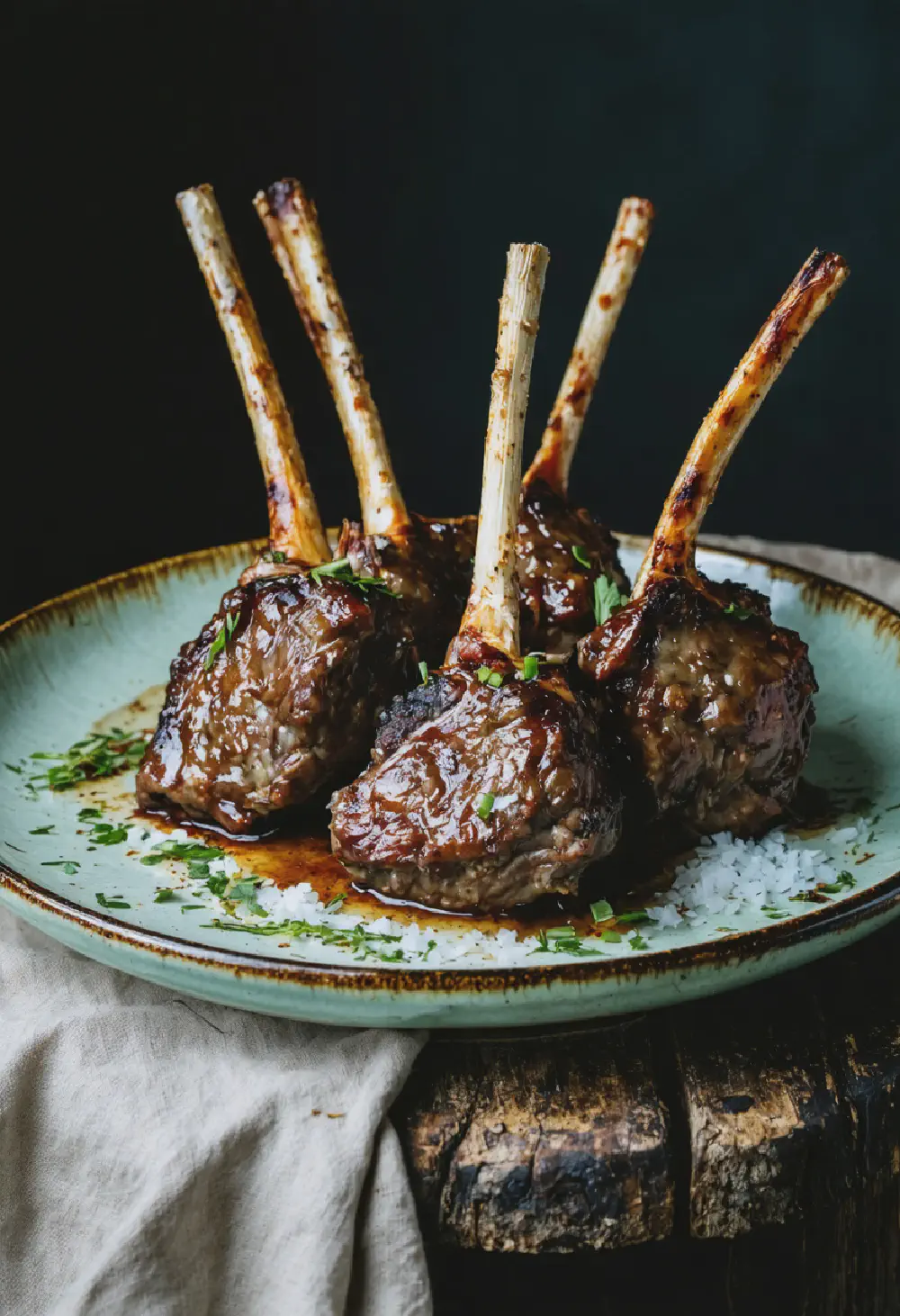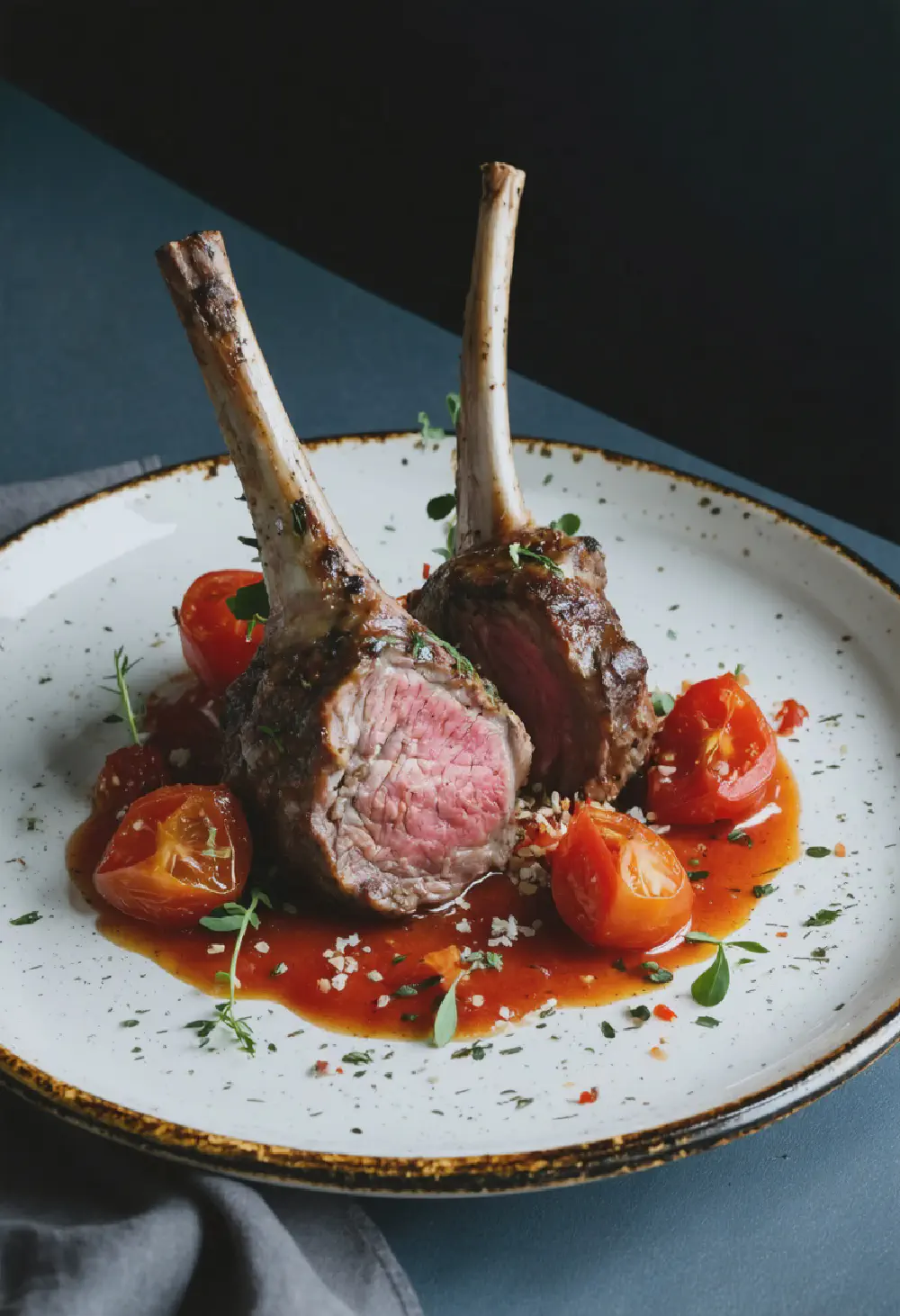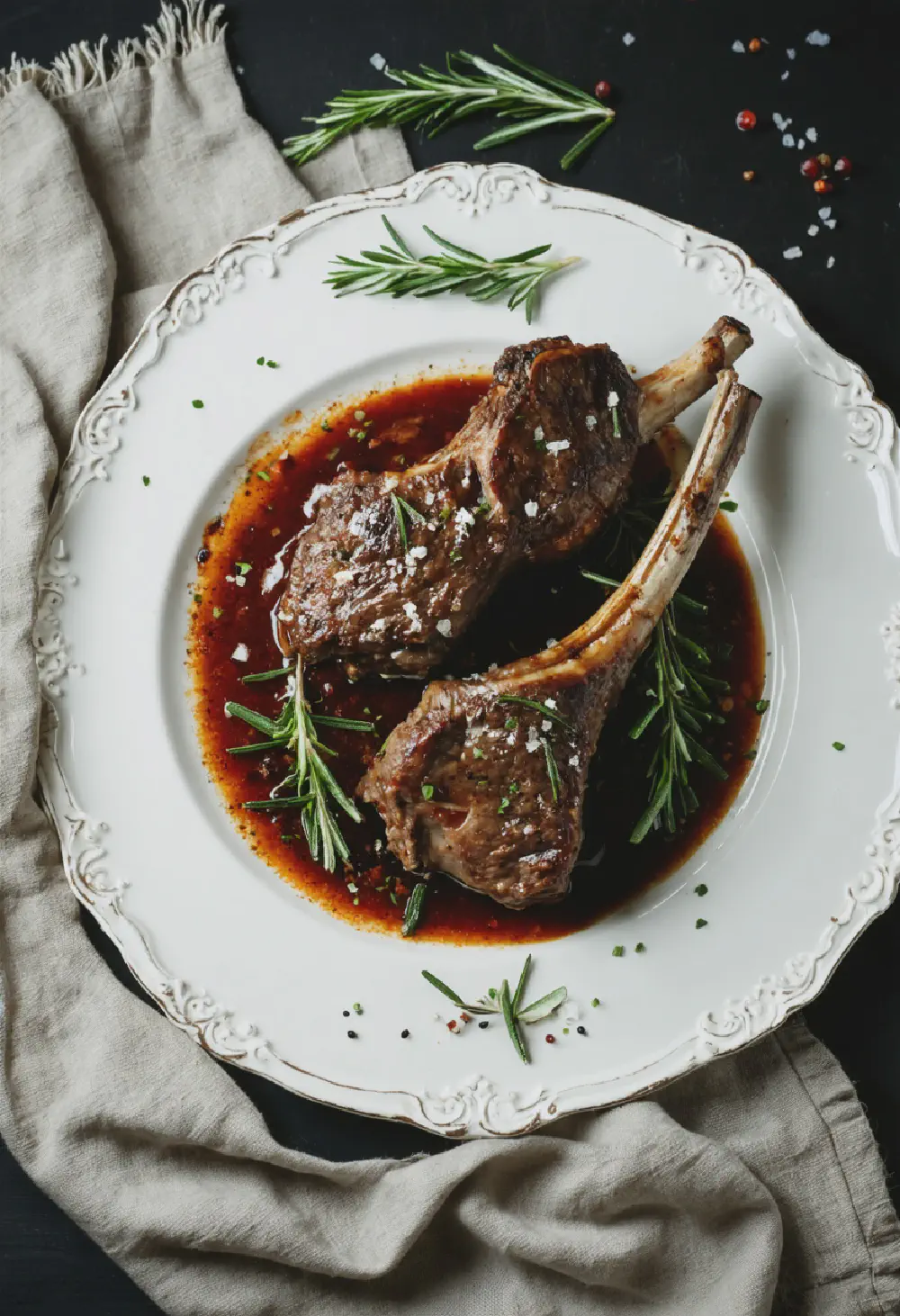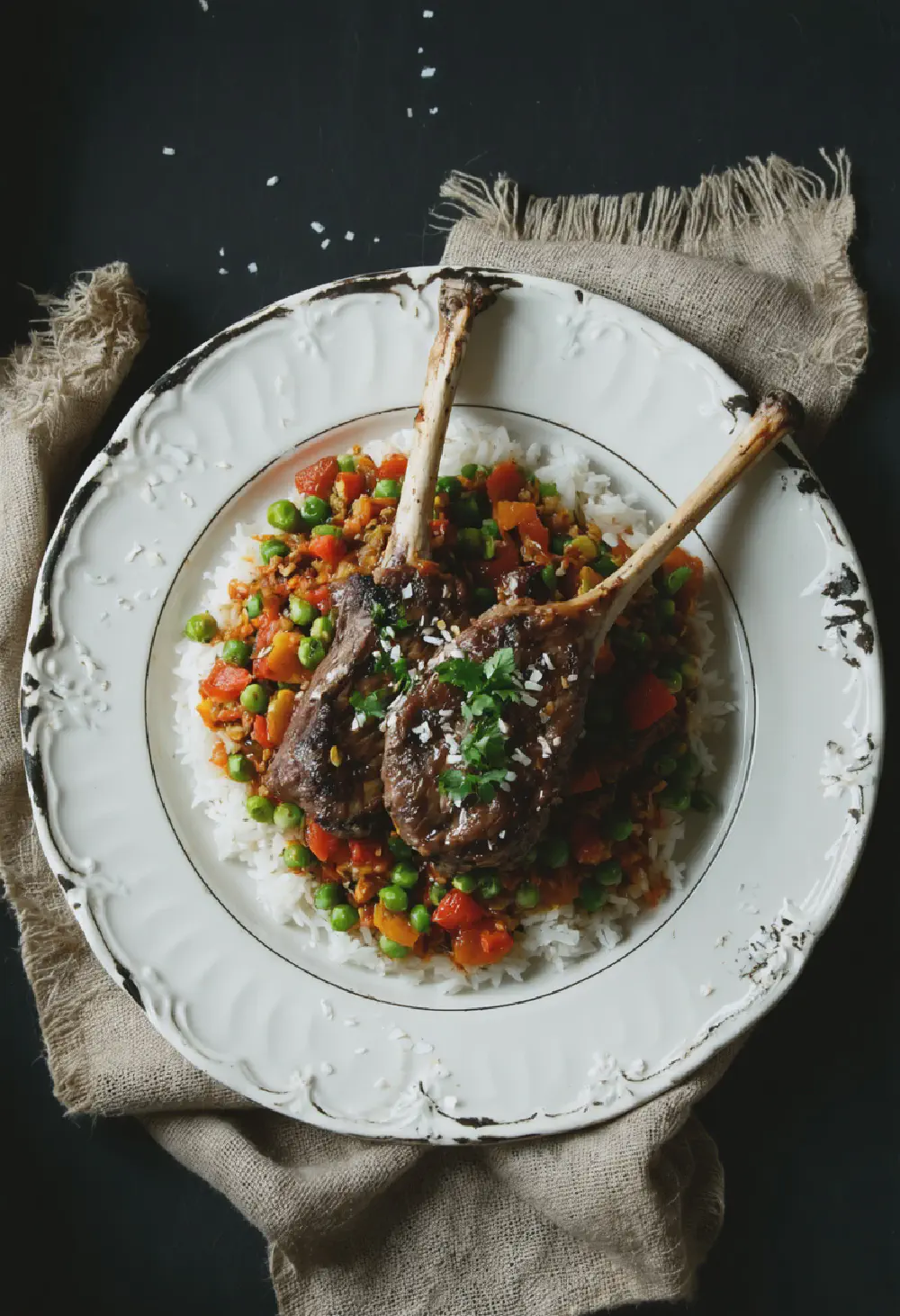Greek-Style Braised Lamb Shanks with Orzo
30M
3H
- Makes 4
- 4 lamb shanks
- Salt and freshly ground black pepper, to taste
- 2 tablespoons olive oil
- 1 large onion, finely chopped
- 4 garlic cloves, minced
- 1 cup dry red wine
- 1 can (14 oz) diced tomatoes
- 2 tablespoons tomato paste
- 2 cups beef or chicken broth
- 1 teaspoon dried oregano
- 1 teaspoon dried thyme
- 2 bay leaves
- 1 cinnamon stick
- 1 cup orzo pasta
- 1/4 cup chopped fresh parsley
- Crumbled feta cheese, for serving
- Preheat your oven to 325°F (160°C).
- Season the lamb shanks generously with salt and pepper.
- Heat the olive oil in a large, oven-safe pot over medium-high heat. Brown the lamb shanks on all sides, about 8-10 minutes total. Remove the shanks and set aside.
- In the same pot, add the chopped onion and sauté until softened, about 5 minutes. Add the minced garlic and cook for another minute.
- Pour in the red wine, scraping up any browned bits from the bottom of the pot. Let it simmer until reduced by half, about 5 minutes.
- Stir in the diced tomatoes, tomato paste, broth, oregano, thyme, bay leaves, and cinnamon stick. Return the lamb shanks to the pot, spooning some of the sauce over them.
- Cover the pot and transfer it to the preheated oven. Braise for 2 to 2.5 hours, or until the lamb is very tender and falling off the bone.
- Remove the pot from the oven. Carefully transfer the lamb shanks to a plate and cover to keep warm.
- Skim off any excess fat from the surface of the sauce. Place the pot over medium heat and bring the sauce to a simmer.
- Stir in the orzo pasta and cook, stirring occasionally, until the orzo is tender and has absorbed most of the liquid, about 10-15 minutes. If the sauce becomes too thick, add a bit more broth or water.
- Return the lamb shanks to the pot, nestling them into the orzo. Cook for another 5 minutes to heat through.
- Remove the bay leaves and cinnamon stick. Taste and adjust seasoning with salt and pepper if needed.
- Serve the lamb shanks and orzo hot, garnished with chopped fresh parsley and crumbled feta cheese.
Greek-Style Braised Lamb Shanks with Orzo: A Culinary Journey
History
The Greek-Style Braised Lamb Shanks with Orzo is a dish deeply rooted in the culinary traditions of Greece. This hearty meal has been a staple in Greek households for generations, often prepared for family gatherings and festive occasions. The use of lamb, a meat highly valued in Greek cuisine, reflects the country’s pastoral heritage and the importance of sheep farming in its agricultural history. The slow-cooking method used in this dish is a testament to the traditional Greek approach to cooking, where flavors are allowed to develop and meld over time, resulting in a rich and comforting meal.
Taste Profile
Greek-Style Braised Lamb Shanks with Orzo offers a complex and satisfying taste profile. The lamb shanks, slow-cooked to perfection, are tender and succulent, with a deep, savory flavor that is enhanced by the rich tomato sauce. The sauce itself is a harmonious blend of tomatoes, herbs, and spices, providing a tangy and slightly sweet undertone that complements the richness of the lamb. The orzo, cooked until creamy, absorbs the flavors of the sauce and adds a comforting texture to the dish. Together, these elements create a balanced and flavorful meal that is both hearty and delicious.
Cultural Significance
In Greek cuisine, the Greek-Style Braised Lamb Shanks with Orzo holds a special place as a dish that embodies the warmth and generosity of Greek hospitality. It is often served during significant family events and celebrations, symbolizing abundance and togetherness. The use of orzo, a type of pasta that is popular in Greek cooking, further ties the dish to the country’s culinary heritage. This meal not only satisfies the palate but also serves as a cultural touchstone, connecting diners to the rich traditions and communal spirit of Greek culture. Whether enjoyed at a family dinner or a festive gathering, this dish is a celebration of Greek culinary artistry and the joy of shared meals.
